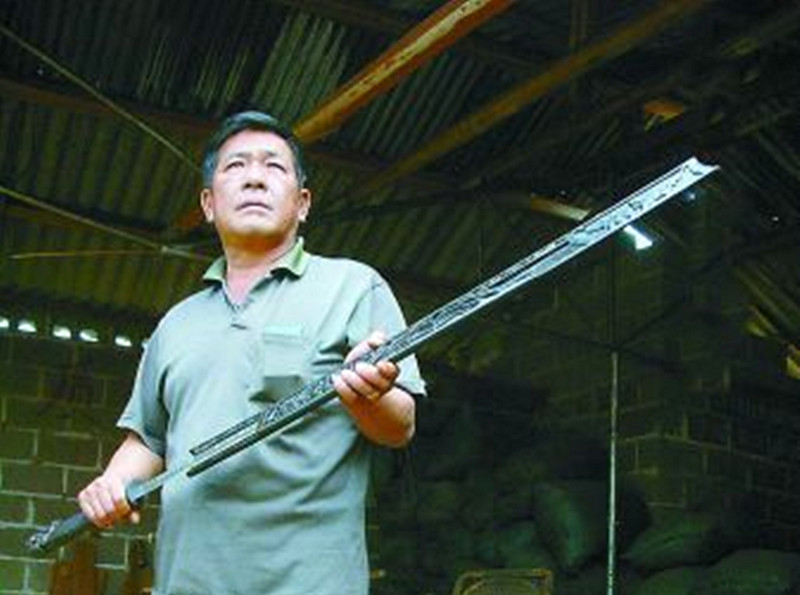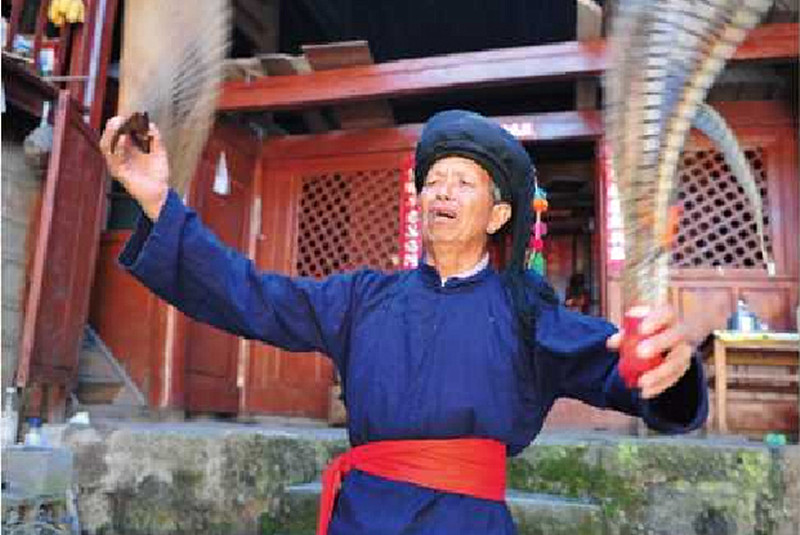
Achang Ethnic Minority
Achang ethnic minority is one of the seven small-population ethnic groups unique to Yunnan. Their native language, Achang, belongs to the Tibeto-Burman branch of the Sino-Tibetan language family. In addition to their native language, most Achang people are also fluent in Chinese and the language of the Dai minority. Their written language is Chinese.
The Achang people are primarily distributed in Longchuan County and Lianghe County of Dehong Prefecture, with smaller populations located in Baoshan. Due to the influence of various cultures, the Achang have developed a diverse religious landscape. They practice a mix of natural worship, ghost worship, ancestor worship, Theravada Buddhism, Chinese Buddhism, and Taoism.
According to the sixth national census in 2010, the Achang population in China totaled 39,555.
History of the Achang Ethnic Minority
Early History and Migration
The ancestors of the Achang people originally inhabited the valleys of the Jinsha, Lancang, and Nu rivers in northwest Yunnan. Over time, some of them migrated westward across the Nujiang River, gradually transitioning from a hunting lifestyle to farming.
Tang and Song Dynasties (618-1279)
During the Tang (618-907) and Song (960-1279) dynasties, the Achang people were under the control of the Nanzhao and Dali kingdoms in Yunnan. These kingdoms played a significant role in shaping the culture and political structure of the Achang people.
Ming and Qing Dynasties (1368-1911)
In the Ming (1368-1644) and Qing (1644-1911) dynasties, the Achang were governed by hereditary chiefs appointed by the imperial court. These chiefs were directly responsible to the central government. During this period, most of the landowners were Han Chinese, though a few Achang individuals were landholders. The Achang people were also subject to a feudal system, with Dai chiefs acting as the feudal lords.
Feudal System and Dai Chiefs
Before 1949, the Achang people lived under a feudal economic system, where Dai chiefs were the primary lords. Most landlords were Han, while only a small number of Achang individuals held land.
Liberation and Social Reform
In early 1950, the Achang people were liberated from feudal rule. Two years later, Achang autonomous districts were established. Starting in the autumn of 1955, the Achang region underwent a series of land reforms that abolished feudal land ownership. Feudal privileges, taxes, and usury were also dismantled during this time.
Achang Ethnic Townships
Husa Achang Ethnic Town of Longchuan County Nangsong Achang Ethnic Town of Lianghe County Jiubao Achang Ethnic Town of Lianghe County
Handicrafts and Folk Arts of Achang Ethnic Minority Ironwares like Husa knife(户撒刀) made by Achang people are very prestigious.
Hulusi ( Cucurbit Flute) Dengwoluo- Folk Dance of Achang Folk Songs of Achang Ethnic Minority Husa Knife Forging Techniques The Famous Husa Knife Simple and Beautiful Costumes
Inheritors
Lou Zongpei Li Jiazhong Zhang Liwang Lai Youhong Xiang Laozhai Cao Mingkuan
Festivals of Achang Ethnic Minority
Ancestor Worship Festival Guoxinnian(New Year) Festival Huanhuangdan Festival Torch Festival Shaobaichai Festival Chuwa(Kaimen/Opening Door) Festival Jinwa(Guanmen/Closing Door) Festival Water Splashing Festival Ganbai Festival Aluwoluo Festival Huijie Festival
Keep Reading
Xinzhai and Hejie Villages Achang Ethnic Culture Protection Area Achang Ethnic Minority is A Nationality Adept at Knife-making Achang Ethnic Minority: A Music Instrument of Love- Gourd-shaped Flute Achang Ethnic Minority: Best Men Accompanying the Groom with Umbrellas to Meet the Bride Achang Ethnic Minority: Playing Green Dragon and White Elephant

 7 Days GolfingTour
7 Days GolfingTour
 8 Days Group Tour
8 Days Group Tour
 8 Days Yunnan Tour
8 Days Yunnan Tour
 7 Days Shangri La Hiking
7 Days Shangri La Hiking
 11 Days Yunnan Tour
11 Days Yunnan Tour
 6 Days Yuanyang Terraces
6 Days Yuanyang Terraces
 11 Days Yunnan Tour
11 Days Yunnan Tour
 8 Days South Yunnan
8 Days South Yunnan
 7 Days Tea Tour
7 Days Tea Tour
 8 Days Muslim Tour
8 Days Muslim Tour
 12 Days Self-Driving
12 Days Self-Driving
 4 Days Haba Climbing
4 Days Haba Climbing
 Tiger Leaping Gorge
Tiger Leaping Gorge
 Stone Forest
Stone Forest
 Yunnan-Tibet
Yunnan-Tibet
 Hani Rice Terraces
Hani Rice Terraces
 Kunming
Kunming
 Lijiang
Lijiang
 Shangri-la
Shangri-la
 Dali
Dali
 XishuangBanna
XishuangBanna
 Honghe
Honghe
 Kunming
Kunming
 Lijiang
Lijiang
 Shangri-la
Shangri-la
 Yuanyang Rice Terraces
Yuanyang Rice Terraces
 Nujiang
Nujiang
 XishuangBanna
XishuangBanna
 Spring City Golf
Spring City Golf
 Snow Mountain Golf
Snow Mountain Golf
 Stone Mountain Golf
Stone Mountain Golf



















